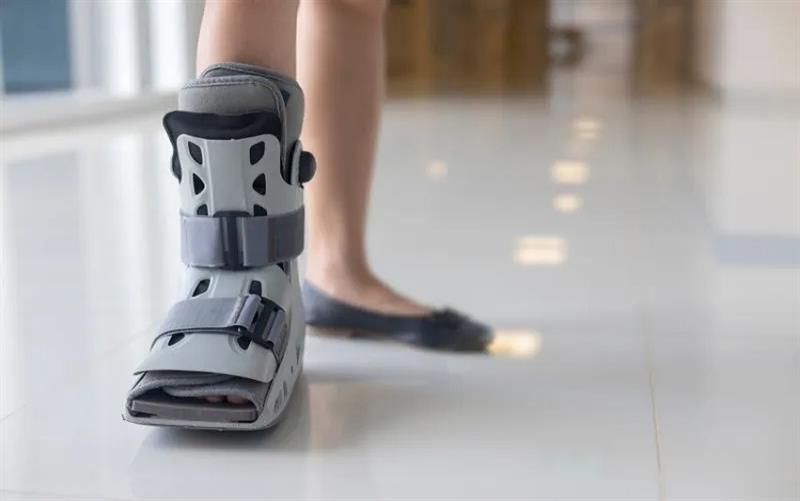
Boots and walking braces are necessary equipment for an effective rehabilitation from foot and ankle injuries. You can accomplish a painless and effective healing process by selecting the appropriate gadget, operating it correctly, and according to the advised care and recovery procedures. Never forget to speak with your healthcare practitioner to get the greatest potential outcome and to customize the strategy to your unique circumstances. With the correct care and assistance, your recovery process can go smoothly.
Ankle and foot injuries can be difficult to recover from, but the correct assistance can help a lot. Boots and walking braces are necessary equipment for a successful and pain-free recuperation. This extensive guide will assist you in maximizing your healing process and navigating their use. Recall that sustaining a happy mindset during the healing process is just as important to a successful recovery as physical healing.
1. Knowing Why Walking Boots and Braces Are Used
- Walking braces: They are made to give the ankle and foot stability and support. They are frequently applied to small fractures, sprains, and strains. Walking braces aid in reducing movement, which helps speed up healing and stop additional injuries.
- Walking boots: Also referred to as air casts or cam boots, these are more immobile and more unyielding. They are usually applied following surgery or for more serious injuries like fractures. Walking boots facilitate the healing process and shield the wounded area from further stress.
2. Selecting the Appropriate Boot or Walking Brace
Depending on the type and extent of your injury, you can choose the right brace or boot. Discuss which of the following options best meets your needs with your healthcare provider:
- For minor injuries, a walking brace with padding and adjustable straps could be adequate.
- In cases of severe injuries, it may be required to wear a walking boot with a strong frame and gel or air padding.
- Make sure the product you select fits properly, offers sufficient support, and is cozy enough to use for extended periods of time.
3. Appropriate Measurement and Fit
For comfort and healing to occur effectively, a perfect fit is essential. To make sure your boot or walking brace fits properly, use these suggestions:
- Measure Your Foot: To determine the correct size, use a measuring tape and use the sizing chart provided by the manufacturer.
- Modify the fastenings and straps: Make sure the boot or brace is just right—not too tight. Excessive tautness can restrict blood flow and lead to pain.
- Look for Pressure Points: Check your skin frequently for any indications of irritation or pressure sores.
4. Weight Bearing Gradually
Increase the amount of weight you place on the damaged foot gradually as it starts to heal. This is the safe way to accomplish it:
- Observe the Advice of Your Physician: Follow the advice from your healthcare practitioner regarding weight-bearing.
- Apply assistive technology: You can move around with the least amount of effort on your wounded foot by using crutches or a walker.
- Pay Attention to Your Body: Lower your weight and speak with your doctor if you feel more pain or discomfort.
5. Appropriate Upkeep and Attention
To make sure your boot or walking brace stays sanitary and effective:
- Clean Frequently: Use a light disinfectant to wipe off the brace or boot's exterior and interior. As directed by the manufacturer for cleaning.
- Examine for Wear: Look for any indications of wear and tear or damage. Replace any damaged parts right away.
- Dry Completely: To prevent any bad smells or infections, make sure the brace or boot is totally dry before re-putting it on.
6. Adjunctive Medicine
Even though boots and walking braces offer vital assistance, adding other therapies will speed up your recovery:
- Physical Therapy: To strengthen and rehabilitate the injured area, perform the exercises that your physical therapist prescribes.
- Elevate and Apply Ice: To relieve discomfort and swelling, elevate your foot and place ice packs on it.
- Pain Management: To control discomfort, take over-the-counter pain medicines as prescribed by your physician.
7. When to Get Additional Medical Help
Keep an eye on your recuperation and recognize any symptoms that can point to complications:
- Increased Swelling or Pain: Get in touch with your doctor if your symptoms get worse.
- Changes in the Skin: Prolonged redness, swelling, or sores may indicate an infection or an ill fit.
- Mobility Issues: Insufficient support from the brace or boot may be indicated if it is difficult to move or bear weight.
8. Emotional and Psychological Assistance
Healing from an injury can be a mentally taxing process. To enhance your mental health, take into account the following:
- Remain Upbeat: Concentrate on the strides you're making and make modest, doable objectives.
- Seek Support: If you're feeling stressed or overwhelmed about your recovery, talk to friends, family, or a counselor.